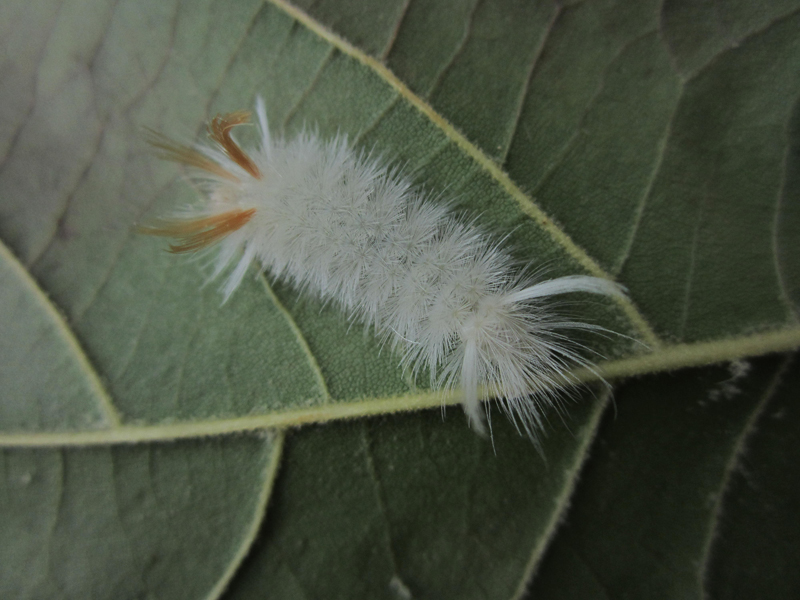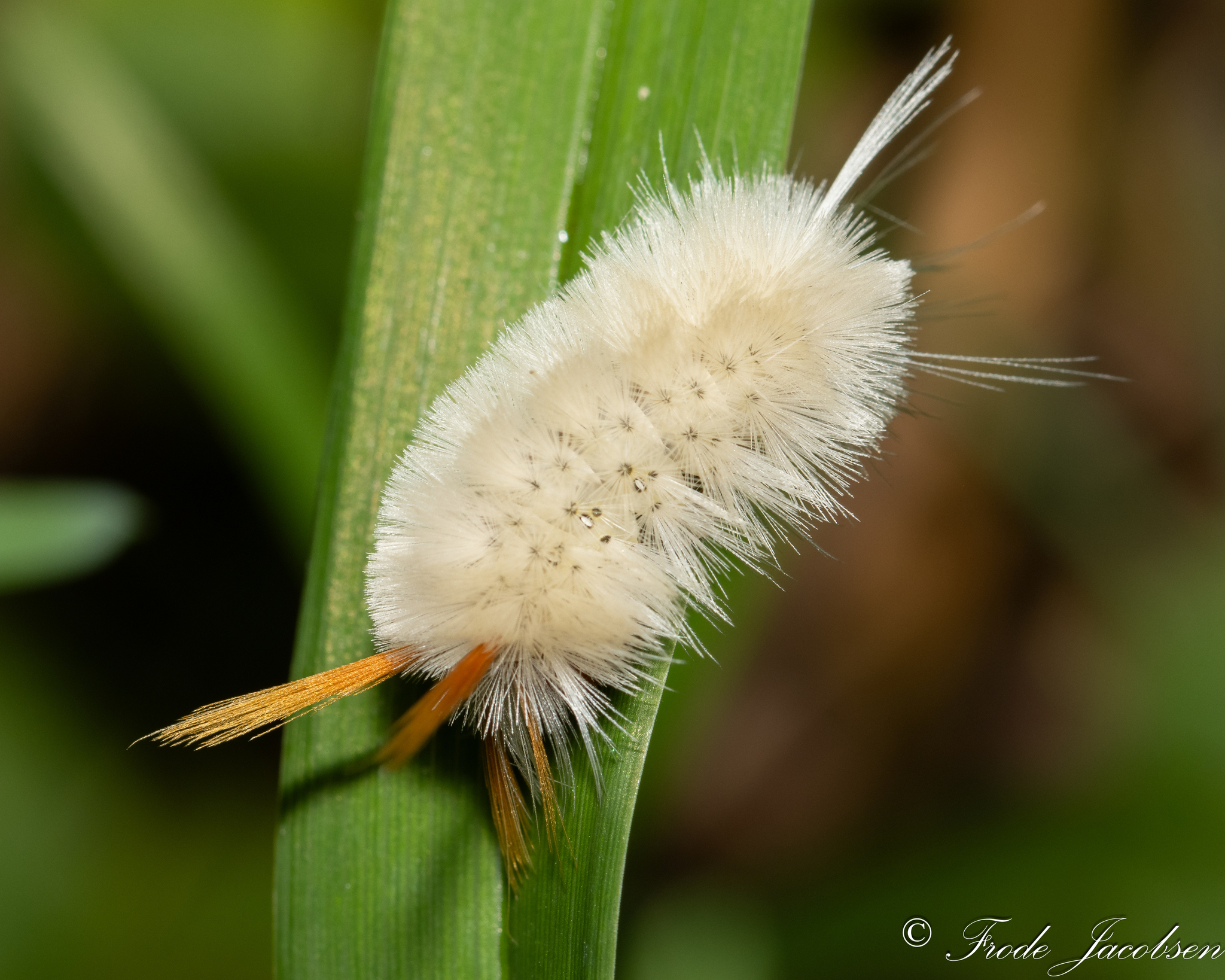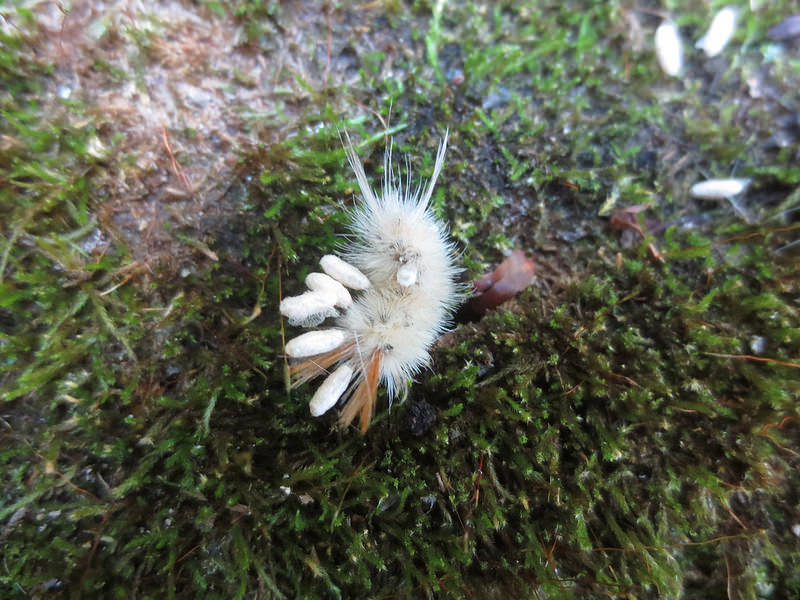Map Snapshot























294 Records
Status
According to BugGuide.net, "adults in the eastern regions can only be separated from Halysidota tessellaris by genitalia dissection." Adults should be posted to the Banded/Sycamore Tussock Moth page.
Relationships
Host plants include American Sycamore.
Seasonality Snapshot
Source: Wikipedia
| Halysidota harrisii | |
|---|---|

| |
| Scientific classification | |
| Domain: | Eukaryota |
| Kingdom: | Animalia |
| Phylum: | Arthropoda |
| Class: | Insecta |
| Order: | Lepidoptera |
| Superfamily: | Noctuoidea |
| Family: | Erebidae |
| Subfamily: | Arctiinae |
| Genus: | Halysidota |
| Species: | H. harrisii
|
| Binomial name | |
| Halysidota harrisii Walsh, 1864
| |

Halysidota harrisii, the sycamore tiger moth, is a moth of the family Erebidae and the tribe Arctiini, the tiger moths. The species was first described by Benjamin Dann Walsh in 1864.[1] It is found in southeastern Canada, the eastern parts of the United States, and northeastern Mexico.
Description
[edit]The larvae have yellow-orange heads and bodies covered with hair, and they can grow to approximately 25–35 mm in length.[2][3] They exhibit two pairs of long, orange hair-pencils and two pairs of white hair-pencils towards the front of their body. They also exhibit one pair of white hair-pencils near the back of their body.
The adults are pale yellow with dark bands on the forewings.[2] Each forewing is 24–26 mm in length, making the wingspan approximately 50 mm.[4] As adults, they are almost indistinguishable from the closely related Halysidota tesselaris.[4]
Life cycle
[edit]The sycamore tiger moth produces two generations each year.[2] Moths emerge from overwintering cocoons from May to June.[2] After mating, they lay egg masses on bark and the underside of leaves. The larvae feed on the American sycamore tree, Platanus occidentalis.[2] They pupate in late June and July, and emerge as moths in July and August. The offspring of this generation spins cocoons in late September and October and overwinters as pupae.
Importance
[edit]
An overpopulation of the insect can be damaging to sycamore trees. Natural predators, such as birds, control most populations. However, pesticides may be needed.[2]
The sycamore tussock moth caterpillar has been documented causing urticaria (hives).[5]
References
[edit]- ^ Savela, Markku (ed.). "Halysidota harrisii (Walsh, 1864)". Lepidoptera and Some Other Life Forms. Retrieved September 17, 2019.
- ^ a b c d e f Leininger, T.D.; Solomon, J.D.; Wilson, A. Dan; Schiff, N.M. (1999). A Guide to Major Insects, Diseases, Air Pollution, Injury, and Chemical Injury of Sycamore (Report). Asheville, North Carolina: Southern Research Station, Forest Service, U.S. Department of Agriculture. p. 4. doi:10.2737/srs-gtr-28.
- ^ "Sycamore Tussock Moth". www.insectidentification.org. Retrieved 2020-08-04.
- ^ a b Watson, A. (1980). A revision of the Halysidota tessellaris species-group (Halysidota sensu stricto) (Lepidoptera: Arctiidae)journal=Bulletin of the British Museum (Natural History). British Museum (Natural History).
- ^ Smith-Norowitz, TA; Norowitz, KB; Kohlhoff, S; Kalra, K; Chice, S; Bluth, MH (2010). "Immune response profiles after caterpillar exposure: a case report". Journal of Inflammation Research. 3: 45–51. doi:10.2147/jir.s11689. PMC 3218733. PMID 22096356.





































